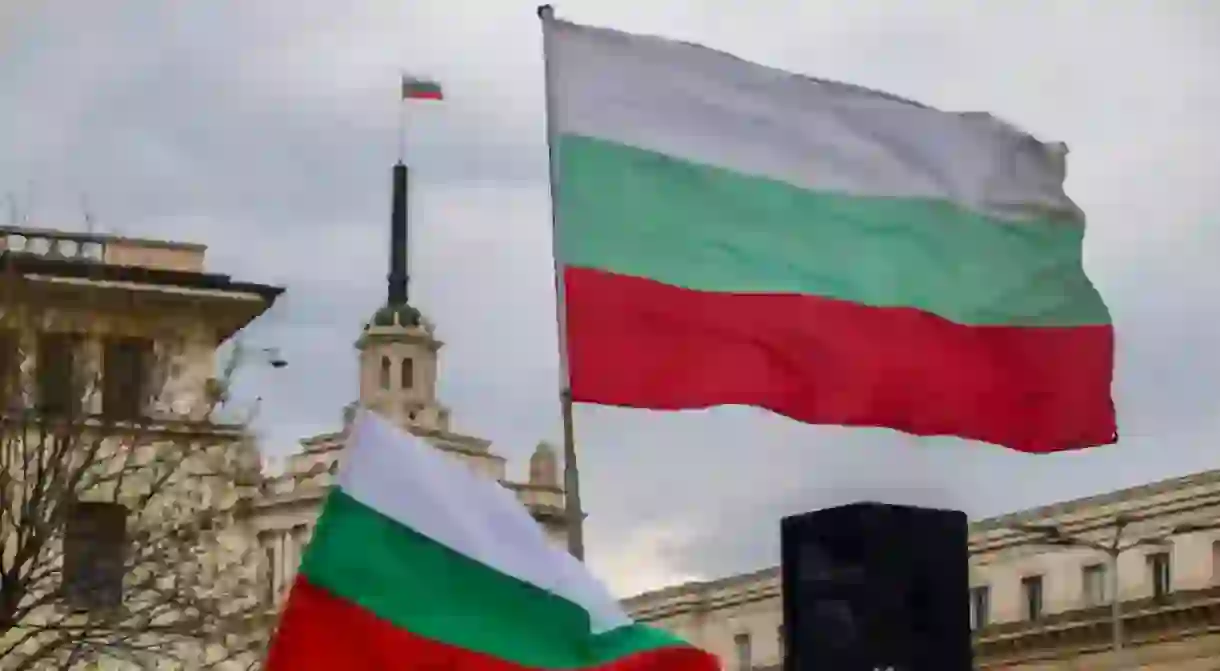20 Best Attractions in Bulgaria

Bulgaria offers an immersive Balkan experience for visitors – you can explore Roman ruins in Plovdiv, hike in mountain ranges with jaw-dropping scenery or pick roses with locals. From ancient tombs to colorful old towns and fortresses, discover our pick of the best attractions in Bulgaria.
Experience Bulgarian hospitality in traditional villages
Architectural Landmark

Some of the Bulgarian villages have been turned into architectural reserves to preserve the beautiful houses of the past. Bulgarians love getting back to nature and to their roots, spending their weekend in villages – growing their own food, sleeping in guesthouses, or just enjoying the silence outside of the city. Vist Rila if you’re looking to get away from the big busy cities!
Delve into Bulgarian history at its best museums
Historical Landmark
Bulgaria has more than 1300 years of history as a country, with many tribes and foreign powers having left their influence over the centuries. Plan a stop at one or more of the Bulgarian museums and learn a bit about the past to better understand the present. History buffs will enjoy a day at the biggest history museum in the country, the National History Museum in Sofia that exhibits some of the most impressive ancient Thracian gold treasures as well as the most important items since prehistoric times. The streets of the Old Town of Plovdiv are dotted with traditional Revival-period houses, many of them museums. See it all on this tour!
Explore rock phenomena
Architectural Landmark
Wind, water, and time have done their job in sculpting amazing rock formations all over Bulgaria. After that, people have used their imagination to create stories about the rock shapes that resemble people, mushrooms, and giants. Visit the Belogradchik Rocks to marvel at the castle set among the rocks, or the Stob Pyramids near Sofia to see the magical earth formations at sunset.
Stroll through historical towns
Architectural Landmark
If you need to get away from the modern world, plan an escape to any of the historical towns in Bulgaria. Nessebar (protected by UNESCO) and Sozopol are located at the seaside and have magnificent Old Towns with wooden houses. The steep cobblestone streets of the Old Town of Plovdiv takes you two centuries back in history. Koprivshtitsa (difficult to pronounce but worth the effort) is a whole town keeping the spirit of the past epochs alive.
Hike in the mountains
Architectural Landmark

Hikers will find all sorts of terrains in Bulgaria – the Pirin and Rila Mountainsmore are rockier and more Alpine-like, while the Rhodopes have rounder shapes and are more green. The Bulgarian mountains are relatively well signed (depending on the route you’ve chosen), but you should always bring a map and a compass with you. There’s an emblematic mountain hike, the Kom to Emine route, which crosses Bulgaria from west to east, finishing at Cape Emine at the Black Sea coast. You will need special training for it, though, as it takes around 20 days to cover.
The Ancient Theater in Plovdiv
Historical Landmark
The imposing structure of the Ancient Theater in Plovdiv Old Town has been well preserved, dating back to the first century. Theatrical performances and gladiator fights took place here, as well as important gatherings of the local government. Come during the summer months to enjoy opera or live music, seated on the ancient stones.
Tsarevets Fortress in Veliko Tarnovo
Church
Prohodna Cave
Belogradchik Rocks
Pirin National Park
Park
Krushuna Waterfalls
Park

The Balchik Palace and Botanical Garden
Natural Feature
One of the best destinations for cultural attractions on the Bulgarian Black Sea coast is the palace in Balchik and its impressive botanical gardens. The palace belonged to the Romanian queen Maria, who ruled these parts of Bulgaria at the time. She loved Balchik so much she made her own spiritual haven.
The town of Koprivshtitsa
Architectural Landmark
The Sveshtari Tomb
Historical Landmark
Sveshtari Tomb is a Unesco-protected ancient Thracian site, discovered in 1982. It was built for the purpose of a royal funeral, although archaeologists are unsure of the name of the deceased. The most impressive feature inside are the 10 female figures with their arms up, appearing as if they are supporting the ceiling.
The Rose Valley
Natural Feature
Rila Monastery
Monastery
Join a cultural festival
Architectural Landmark
There is a marvelous Bulgarian tradition for every season – from the Kukeri monster dances in winter to the Rose Festival in the Rose Valley in June and the July Morning tradition on July 1 when the locals greet the rising sun to welcome the summer. On June 3, the ancient tradition of Nestinari, walking on embers, takes place in the small border village of Balgari. In the first weekend of August, the biggest open-air bagpipe gathering fills the air with folkloric music on the mountain slopes around the village of Gela. Find a cultural festival in Plovdiv!
Taste local delicacies
Architectural Landmark
Bulgarian cuisine has much in common with the other Balkan countries, but it has its own specialties, too. Fresh vegetable salads are locals’ favorite all year round (try the fresh vegetables and Bulgarian feta cheese Shopska salad and Ovcharska salad, the mayonnaise-based Ruska salad, or the Mlechna salad that is similar to the Greek tzatziki). If you travel through the Rhodope Mountains, don’t miss its local culinary delights. Go wine tasting in Sofia!
Hit the beaches
Natural Feature

The Bulgarian coast attracts many European vacationers every summer, offering both wild and luxury beaches. Sunny Beach, Golden Sands, and Kiten have a more vibrant, party atmosphere, while Sinemorets, Ahtopol or Kavarna are better for families. Varna and Burgas are the two major coastal cities that also have industrial zones and big shopping malls.
Enjoy the snowy slopes
Natural Feature
Bansko, Pamporovo, and Borovets are the three major ski resorts in Bulgaria with many ski and snowboard facilities. There are tracks for both beginners and advanced winter sports enthusiasts.













